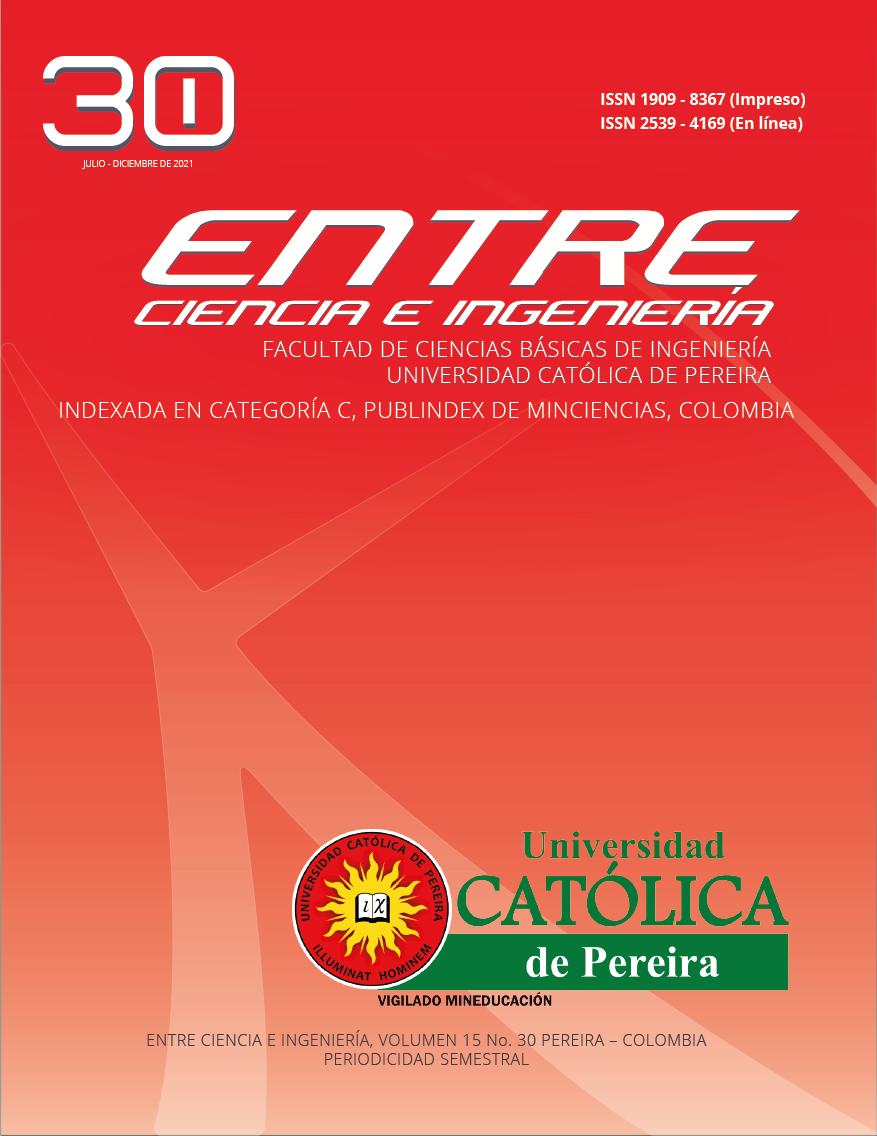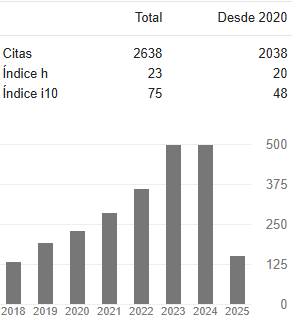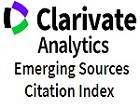Incidence of the sampling depth on the content of forms of carbon and nitrogen in soils of the Zona Bananera of the department of Magdalena (Colombia)
DOI:
https://doi.org/10.31908/19098367.2586Keywords:
Carbon, Nitrogen, sampling depth, soils, Zona BananeraAbstract
The objective of the work was to determine the incidence of the sampling depth on the carbon and nitrogen content in soils of the municipality of Zona Bananera of the department of Magdalena (Colombia). Data analysis was performed with statistical software Infostat v.2008 and R v.3.5.2, using multivariate analysis of variance, Pearson's correlation analysis, and descriptive statistics of each variable. The results show significant differences (p<0,05) between the depth groups for the selected variables, with lower contents found at depth 2. In addition, there is a significant contribution of the variables to the statistical differences between the groups, except for ammonium and nitrate. Correlation is evident between the variables C oxidizable/MO, NO3-/NO2-, and NH4+/C oxidizable/MO. The results obtained showed low Pearson correlation coefficients. It is concluded that the variables C oxidizable and MO are strongly related, while the others present a non-linear relationship.
Downloads
References
T. Celis, “Efecto de la distribución heterogénea de nitrato sobre el sistema radical de Capsicum chinense Jacq”, Tesis doctoral dirigida por I. Echevarría y M. Martínez, Centro de Investigación Científica de Yucatán, A.C., 27, sep. 2011.
A. J. Bloom, J. Frensch and A. R. Taylor, “lnfluence of inorganic nitrogen and pH on the elongation of maize seminal roots”, Ann Bot London, 97, 867-873, 2006.
L. Cerón y F. Aristizábal. (2012, Jul.). Dinámica del ciclo del nitrógeno y fósforo en suelos. Rev. Colomb. Biotecnol. [Online]. 14(1), pp. 285- 295. Disponible en: http://www.scielo.org.co/pdf/biote/v14n1/v14n1a26.pdf.
R. D. Zapata y W. Osorio, “La materia orgánica del suelo”, en Ciencia del suelo: principios básicos, H. Burbano y F. Silva, Ed. Bogotá, Sociedad Colombiana de la Ciencia del Suelo (SCCS), 2010, pp. 357- 396.
M. G. Klotz and L. Y. Stain, “Nitrifier genomics and evolution of the nitrogen cycle”, FEMS Microbiological Letters, 278, 146-156, 2008.
M. Hayatsu, K. Tago and M. Saito, “Various players in the nitrogen cycle: Diversity and functions of the microorganisms involved in nitrification and denitrification”, Soil Science and Plant Nutrition, 54, 33-45, 2008.
B. Hu, L. Shen, X. Xu and P. Zheng. (2011, Dec.). Anaerobic ammonium oxidation (anammox) in different natural ecosystems. Biochemical Society transactions. [Online]. 39(6), pp. 1811-6. Disponible en: https://www.researchgate.net/publication/51818617_Anaerobic_ammonium_oxidation_anammox_in_different_natural_ecosystems.
M. Perea, Biotecnología: bananos y plátanos, Editora Guadalupe, Bogotá, 2003.
M. E. Cruz, “Respuestas en desarrollo y producción del banano a la fertilización con nitrógeno y potasio en la zona de Santa Marta”, Universidad Nacional de Colombia, Facultad de Ciencias Agrarias, 2014.
J. Sánchez y J. Mira, Principios para la nutrición del cultivo de banano, AUGURA-CENIBANANO, Medellín, 2013, pp. 236.
J. Torres, “Absorción, distribución y acumulación de nitrógeno en banano variedad Williams en dos ciclos de producción en zona húmeda tropical”, Tesis doctoral dirigida por S. Magnitskiy, Facultad de Ciencias Agrarias, Universidad Nacional de Colombia, 2016.
S. Sadeghian. (2003). Efecto de la fertilización con nitrógeno, fosforo, potasio y magnesio sobre las propiedades químicas de suelos cultivados en café. Cenicafé. [Online]. 54(3), pp. 242-257. Disponible en: https://www.cenicafe.org/es/publications/arc054%2803%29242-257.pdf.
A. R. Eugercios, M. Álvarez y E. Montero. (2017). Impactos del nitrógeno agrícola en los ecosistemas acuáticos. Ecosistemas. [Online]. 26(1), pp. 37-44. Disponible en: https://www.revistaecosistemas.net/index.php/ecosistemas/article/view/1309.
Food and Agriculture Organization (FAO), “Estado Mundial del Recurso Suelo”, 2016. [Online]. Disponible: http://www.fao.org/3/ai5126s.pdf.
Food and Agriculture Organization (FAO), “Los suelos ayudan a combatir y adaptarse al cambio climático”, 2015. [Online]. Disponible: http://www.fao.org/3/a-bb018s.pdf.
Food and Agriculture Organization (FAO), “Soil carbon sequestration for impoved land management”, 2001. [Online]. Disponible: http://www.fao.org/3/a-bl001e.pdf.
R. Lal, “Residue management, conservation tillage and soil restoration for mitigating greenhouse effect by CO2 – enrichment”, Soil Till. Res, 43, 81-107, 1997.
P. Etcheverría y D. Barahona, “Una base más estable: el secuestro de carbono en los suelos como alternativa de adaptación al cambio climático”, 2017. [Online]. Disponible: https://www.inia.cl/wp-content/uploads/2017/06/INIA-secuestro-de-carbono-91-MundoAgro_Jun2017.pdf.
F. Paz y J. Etchevers, “Distribución a profundidad del carbono orgánico en los suelos de México”, Terra Latinoamericana, 34, 339-355, 2016.
E. Martínez, J. Fuentes y E. Acevedo, “Carbono orgánico y propiedades del suelo”, R.C. Suelo Nutr. Veg., vol. 8, n.º 1, pp. 68-96, 2008.
R. Lal, “Soil Carbon Sequestration Impacts on Global. Climate Change and Food Security”, Science AAAS, 304, 1623-1627, 2004.
M. T. Colqué y V. E. Sánchez, “Los gases de efecto invernadero: ¿Por qué se produce el Calentamiento Global?”, Asociación Civil Labor/Amigos de la Tierra-Perú, Mar. 2007. [Online]. Disponible: http://www.labor.org.pe/descargas/1ra%20publicacion_%20abc%20cc.pdf.
Food and Agriculture Organization (FAO), “Captura de carbono en los suelos para un mejor manejo de la tierra”, 2002. [Online]. Disponible: http://www.fao.org/3/a-bl001s.pdf.
J. Torres. (2017) Optimizan uso de nitrógeno en producción bananera. Agencia de noticias Universidad Nacional de Colombia. [Online]. Disponible: https://agenciadenoticias.unal.edu.co/detalle/article/optimizan-uso-de-nitrogeno-en-produccion-bananera.html.
Instituto Geográfico Agustín Codazzi (IGAC), “Estudio general de suelos y zonificación de tierras. Departamento del Magdalena - Escala 1: 100000”, Imprenta Nacional de Colombia, Bogotá D.C, 2009.
O. Cabeza, “Agua y conflictos en la Zona Bananera del Caribe colombiano en la primera mitad del siglo XX”, Tesis de maestría dirigida por S. Gallini, Facultad de Ciencias Económicas, Instituto de Estudios Ambientales, Universidad Nacional de Colombia, 2014.
L. Díaz y M. Morales, Análisis Estadístico de datos Multivariados, Editorial de la Universidad Nacional de Colombia, Bogotá, 2012.
K. V. Mardia, J. T. Kent and J. M. Bibby, Multivariate Analysis, Academic Press, London, 1979, pp. 518.
N. González, J. Abad y J. P. Lévy, “Normalidad y otros supuestos en análisis de covarianzas”, en Modelización con estructuras de covarianzas, J. Lévy, Ed. La Coruña, Netbiblo, 2006, pp. 31-57.
Downloads
Published
Issue
Section
License
Copyright (c) 2022 Entre ciencia e ingeniería

This work is licensed under a Creative Commons Attribution-NonCommercial 4.0 International License.



















